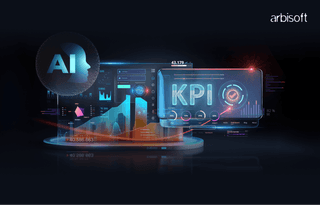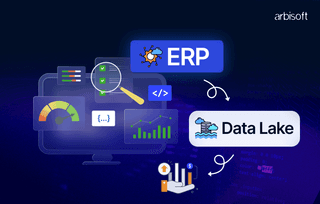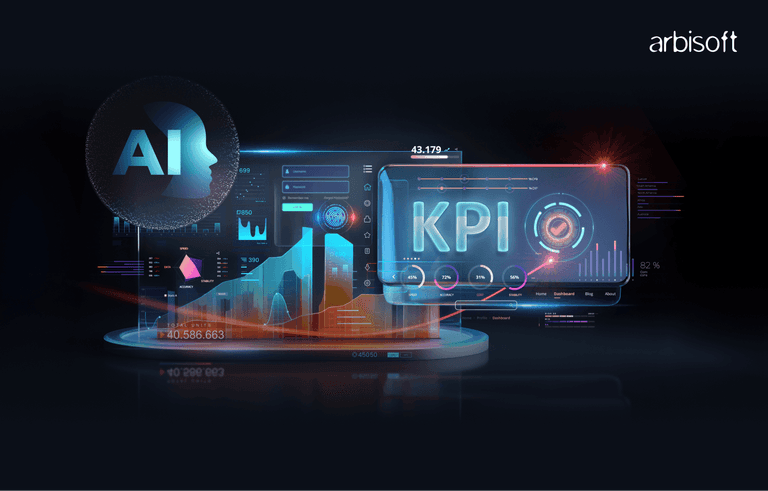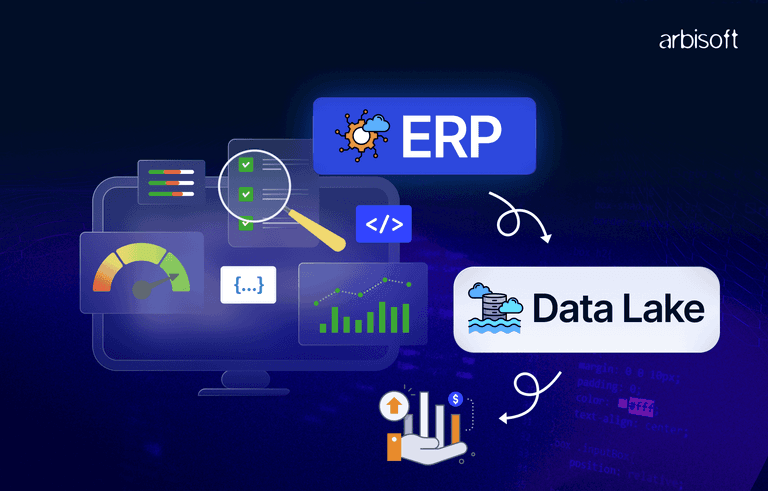We put excellence, value and quality above all - and it shows




A Technology Partnership That Goes Beyond Code

“Arbisoft has been my most trusted technology partner for now over 15 years. Arbisoft has very unique methods of recruiting and training, and the results demonstrate that. They have great teams, great positive attitudes and great communication.”
AI Model Compression Part III: Foundation of Optimization: The Birth of Neural Computation

Just as early researchers in neural networks faced the challenge of mimicking the human brain’s ability to learn and adapt, they soon realized that optimizing network structures—similar to how the brain strengthens neural connections—was essential for improving performance.
Layer 1: Philosophical Understanding
The Big Question
When neural networks were first being developed, researchers faced a deep and almost philosophical challenge: how do you teach a machine to learn? This wasn’t just a technical problem; it was humanity’s first real attempt to replicate how we understand and make sense of the world. It was like standing at the edge of a new frontier, trying to transform the abstract concept of learning into something tangible and mathematical.
The comparison to early toolmaking is hard to miss. Just as our ancestors had to figure out how to shape stone into useful tools by understanding both the material and their goal, early neural network researchers had to understand the math behind learning and how to represent knowledge in a way a machine could process.
What Does Learning Really Mean?
At its core, learning is about spotting patterns and fixing mistakes. The earliest neural networks were built around this simple idea: adjusting their connections when they got things wrong, much like a child learning to walk by falling and trying again. This trial-and-error approach reminds us of how early humans gradually improved their tools over generations, learning from every success and failure.
Layer 2: Technical Foundation
How Neural Networks Learn
The foundation of a neural network is the artificial neuron, inspired by the way biological neurons work. These neurons take inputs, apply weights to them, and then run the results through an activation function, a fundamental approach that underpins modern deep learning solutions for tackling complex problems. It’s a simple yet powerful way of mimicking how we process and learn from information.
z = ∑(w_i * x_i) + b
a = f(z)
where:
w_i = weights
x_i = inputs
b = bias
f = activation functionThis simple formula reveals a deep truth: learning can be reduced to the adjustment of weights based on error. The activation function introduces non-linearity, allowing networks to learn complex patterns:
Common Activation Functions:
Sigmoid: σ(x) = 1/(1 + e^(-x))
Tanh: tanh(x) = (e^x - e^(-x))/(e^x + e^(-x))
ReLU: f(x) = max(0, x)The Loss Function: Quantifying Error
At the core of learning is the loss function. Early researchers realized that the process of learning could be approached as an optimization problem.
Mean Squared Error Loss:
L(θ) = 1/N ∑(y_pred - y_true)²
Cross-Entropy Loss:
L(θ) = -∑(y_true * log(y_pred))
where:
θ = model parameters
N = number of samples
Layer 3: Deep Technical Analysis
Gradient Descent: The Learning Algorithm
The fundamental learning algorithm, gradient descent, operates by following the negative gradient of the loss function:
θ_new = θ_old - η∇L(θ)
where:
η = learning rate
∇L(θ) = gradient of loss function
Let's analyze this process step by step:
1. Initial State:

2. Gradient Calculation:
The partial derivatives of each weight show the direction of the steepest descent:
∂L/∂w_i = ∂L/∂a * ∂a/∂z * ∂z/∂w_i
For a simple neuron:
∂z/∂w_i = x_i
∂a/∂z = f'(z)
∂L/∂a depends on loss function
3. Weight Update Process:
For each weight w_i:
Compute gradient: g_i = ∂L/∂w_i
Update: w_i ← w_i - η * g_iEarly Optimization Challenges
1. The Vanishing Gradient Problem:
In deep networks:
∂L/∂w_early ≈ ∏(f'(z_l))
↓
Becomes very small with sigmoid/tanh
2. Learning Rate Sensitivity
If η too large:
Oscillation or divergence
If η too small:
Very slow learningWhere Mathematics Meets Mind
The First Step: Understanding the Artificial Neuron
Think of a door with several locks, and each lock needs a specific key. The locks are like inputs, and the keys are like weights. The trick isn’t just having the keys—it’s knowing how much to turn each one. When you get the combination just right, the door unlocks. In a similar way, an artificial neuron takes inputs, combines them with their weights, and decides whether to “unlock” or activate.
This is the basic idea behind how the first artificial neuron works. Let’s look at it step by step with some simple math:
z = w₁x₁ + w₂x₂ + w₃x₃ + b
Think of it as:
- x₁, x₂, x₃ are different locks
- w₁, w₂, w₃ are how much you turn each key
- b is the initial position of the lock
- z is whether the door opensThe Dance of Activation
But here's where the story gets interesting. The neuron doesn't just sum up inputs; it decides what we call an activation function. Think of it like a nightclub bouncer who has to decide whether to let people in based on multiple factors:
Sigmoid Function: σ(x) = 1/(1 + e^(-x))
Imagine:
- The bouncer (sigmoid) looks at all factors (x)
- Decides yes (close to 1) or no (close to 0)
- There's no abrupt decision, but a smooth transition
Think of the sigmoid function as a fair judge, taking extreme values and transforming them into balanced outputs between 0 and 1. It’s like softening the rigid black-and-white logic of digital computers into the gentle shades of gray that resemble human thought.
The Heart of Learning: The Loss Function
Now we get to one of the most fascinating parts of neural networks—how they learn from their mistakes. Imagine a skilled archer practicing their aim:
Loss = (Target - Arrow's Landing)²
The squared term is crucial because:
- Missing by 2 inches is more than twice as bad as missing by 1 inch
- Both overshooting and undershooting are equally problematicThis is exactly what the Mean Squared Error loss function does:
MSE = 1/N ∑(y_true - y_pred)²
Think of it this way: Each prediction is like an arrow shot at a target. The loss function measures how far we missed and punishes bigger misses exponentially more. It's nature's way of saying "being very wrong is much worse than being a little wrong."
The Gradient Descent Story
Here's where the magic really happens. Imagine being blindfolded on a hill, trying to reach the lowest point. How would you do it? You'd feel the slope under your feet and take steps downward. This is exactly what gradient descent does:
θ_new = θ_old - η∇L(θ)
In our hillclimbing analogy:
- θ_old is where you're standing
- ∇L(θ) is the slope you feel
- η (learning rate) is your step size
- θ_new is your new position
But here's the beautiful part: just as you would take bigger steps on steep slopes and smaller steps on gentle ones, the gradient naturally guides the learning process. When we're far from the optimal solution (steep slope), we make bigger changes. As we get closer (gentle slope), we make more careful, refined adjustments.
The Batch Normalization Revolution
Early neural networks faced a problem similar to trying to balance on a boat in stormy seas; inputs would vary wildly, making learning unstable. Enter batch normalization, perhaps one of the most elegant solutions in deep learning:
x_norm = (x - μ)/σ
Think of it as:
- Taking rough seas (varying inputs)
- Calculating the average wave height (μ)
- Measuring wave variability (σ)
- Creating a stable surface to stand on (x_norm)The Ancient Seeds of Learning
In ancient Egypt, priests noticed that the floods of the Nile followed patterns that helped predict the harvest. This simple idea—that we can observe, measure, and predict patterns in nature—would continue to shape human thinking and eventually lead to the development of artificial neural networks.
The First Patterns: How Nature Learns
Before we get into the math of learning, let's first recognize a simple but powerful truth, the ability to learn from patterns is older than humanity itself. When a sunflower tracks the sun across the sky, it's executing a natural optimization algorithm that took millions of years to evolve. Its cells contain a biochemical dance that mirrors what we would later capture in our activation functions:

The Mathematical Echo of Consciousness
The Perceptron: A Mirror of Mind
When Frank Rosenblatt designed the perceptron in 1957, he wasn't just creating a computational tool; he was attempting to mathematically capture the moment of decision in a conscious mind. The weighted sum of inputs leading to a binary decision mirrors how our own neurons fire:

But here's the interesting part: both systems are essentially trying to sort out what’s important from what’s not—finding the signal in the noise. This is the same challenge our ancestors faced when figuring out which berries were safe to eat or which shadows might hide danger.
The Dance of Numbers: Understanding Neural Mathematics
When we write the basic neural network equation:
output = f(Σwᵢxᵢ + b)
We're not just writing mathematics; we're describing the moment of understanding itself. Let's break this down through a story as old as humanity:
Imagine an ancient hunter tracking prey. Every input matters:
- The direction of the wind (x₁)
- Fresh footprints (x₂)
- Broken twigs (x₃)
The hunter uses their experience to judge how important each clue is (weights w₁, w₂, w₃). The brain then combines all these clues and makes a choice: move forward or stay put. This is exactly what artificial neurons do.
The Loss Function: Mathematics of Regret and Learning
One of the most human aspects of neural networks is how they learn from mistakes. The loss function isn’t just math; it’s a way of measuring regret, capturing the gap between what was expected and what actually happened—a principle equally pivotal in machine learning data services that optimize predictions.
L(θ) = (reality - prediction)²
Think deeper:
- Reality: What actually is
- Prediction: What we thought would be
- The square: How much we care about being wrong
This mirrors how human consciousness processes error:
- We make a prediction
- We observe reality
- We feel the weight of our mistake
- We adjust our understanding
The squared term in our loss function isn't just mathematical convenience—it reflects a deep truth about learning: being very wrong hurts exponentially more than being slightly wrong.
Gradient Descent: The Mathematics of Wisdom
Now we arrive at perhaps the most beautiful parallel between human and artificial learning. Gradient descent, often written as:
θ_new = θ_old - η∇L(θ)
It’s really about how wisdom builds up through experience. Picture a blind person making their way down a mountain, learning with each step.
- They feel the slope beneath their feet (∇L(θ))
- They take careful steps downward (η, the learning rate)
- Each step builds on the knowledge of previous steps (θ_old → θ_new)
This is exactly how both human wisdom and artificial intelligence accumulate; through careful steps guided by the gradient of experience.
























